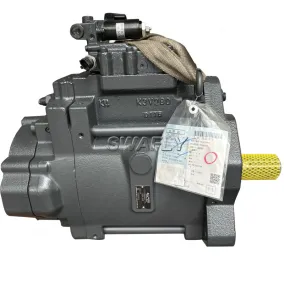What are the three basic types of hydraulic pumps?
In the intricate world of machinery, hydraulic pumps serve as the unsung heroes, powering a myriad of applications across industries. Now, let's answer the pivotal question: What are the three basic types of hydraulic pumps ?
Defining the Core Types
Gear Pumps
The first of the trio, gear pumps, stands as a testament to the elegance of simplicity. These pumps operate on the principle of interlocking gears, transforming mechanical power into hydraulic energy. As the gears rotate, suction and discharge actions occur, ensuring a steady flow of fluid. This design, known for its reliability, finds applications where consistency is paramount.
Understanding Gear Pump Mechanism
The heart of a gear pump lies in the meshing of gears within a close tolerance. As the gears rotate, they trap fluid between their teeth, propelling it from the inlet to the outlet. This continuous cycle ensures a reliable and predictable flow of hydraulic fluid. The straightforward mechanism of gear pumps makes them suitable for various industrial settings where a constant fluid supply is essential.
Vane Pumps
The second player in this hydraulic symphony is the vane pump, distinguished by its ingenious vane-blade design. Vane pumps utilize slotted vanes that move in and out of the rotor, creating fluid flow. This design imparts flexibility and efficiency, making vane pumps adaptable to diverse applications.
Delving into Vane Pump Technology
The operation of vane pumps hinges on the movement of vanes within rotor slots, generating the necessary fluid displacement. The simplicity of this design, combined with its effectiveness, positions vane pumps as versatile components in hydraulic systems. Their ability to handle different fluids and provide stable performance under varying conditions adds to their appeal.
Piston Pumps
Completing the trio, piston pumps operate on the principle of reciprocating pistons within cylinders. This design yields high efficiency and power, making piston pumps indispensable in applications demanding precision and pressure.
The Intricacies of Piston Pump Operation
Piston pumps rely on the back-and-forth movement of pistons to draw in and expel hydraulic fluid. This precise control over fluid displacement renders piston pumps suitable for applications requiring high accuracy and pressure, such as in heavy machinery and industrial processes.
Origins and Evolution
Tracing the Roots of Hydraulic Pumps
To understand the three basic types of hydraulic pumps, we journey back to the origins of hydraulic systems. The need for efficient energy transfer laid the groundwork for the development of basic pump mechanisms. Early hydraulic systems employed rudimentary designs, paving the way for the evolution of more sophisticated pump technologies.
Technological Advancements in Pump Design
The evolution of hydraulic pumps has been marked by continual technological advancements. Innovations in materials, manufacturing processes, and control systems have elevated the performance and reliability of hydraulic pumps. Modern designs integrate advanced materials, ensuring durability, while sophisticated control systems enhance efficiency and responsiveness.
Significance in Various Industries
Hydraulic Pumps in Action
The significance of hydraulic pumps resonates across diverse industries, serving as the backbone of various applications.
Automotive Applications
In the automotive sector, hydraulic pumps contribute to power steering systems, brake systems, and transmission systems. The reliability and precision of hydraulic pumps are crucial for ensuring the safety and efficiency of vehicles.
Industrial Machinery
Hydraulic pumps are integral to various industrial machines, providing the force necessary for lifting, pressing, and shaping materials. Their versatility and power make them indispensable in manufacturing and construction settings.
Aerospace Industry
In the aerospace industry, hydraulic pumps play a vital role in controlling aircraft systems. From the operation of landing gear to adjustments in wing flaps, the precision and reliability of hydraulic pumps are critical for ensuring the safety and functionality of aircraft.
Impact on Modern Engineering
Shaping the Future of Hydraulic Systems
The impact of hydraulic pumps on modern engineering is profound. As technology advances, hydraulic systems continue to evolve, integrating advanced materials and design concepts.
Integration of Advanced Materials
The use of advanced materials, such as high-strength alloys and composite materials, enhances the durability and performance of hydraulic pumps. These materials withstand extreme conditions, contributing to the longevity of hydraulic systems.
Efficiency Improvements in Pump Design
- 235
- 0
- 0




